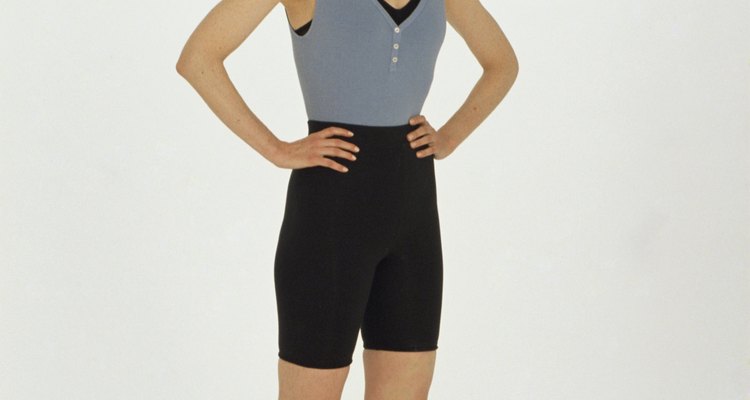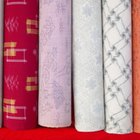
DuPont first created spandex in 1959 as a revolutionary material fiber that combined flexibility with superior strength and resilience. According to the American Fiber Manufacturer's Association, spandex material stretches up to 500 percent without tearing or ripping. However, with this super-strength comes certain functional drawbacks and difficulties. In 2011, clothing companies still use spandex for a variety of purposes, but no longer see the material as a fix-all fabric for every occasion.
Traps Moisture
The inability of spandex material to breathe moisture makes the material less than ideal for sweat-inducing activities such as exercising or hiking. In addition to fostering an unpleasant odor, trapping sweat near your skin increases your risk of yeast infections and blistering along the clothing seams. In 2011, exercise clothing designers avoid these problems by including other breathable materials in their spandex garments.
Slippery on Surfaces
The slick smoothness of spandex makes wearing this fiber dangerous on certain apparatuses and equipment. Riding on a stationary bike or sitting on a weight bench, for example, becomes difficult and risky when your clothing glides off the surface designated for sitting. Even structures not intended for athletics, such as a plastic subway seat or a smooth park bench, become potential hazards against the friction-lacking texture of spandex clothing.
Sensitive to Heat
The chemical composition of spandex makes the material highly sensitive to heat. Washing spandex in hot water, machine drying or ironing causes puckering and ruins the fabric permanently. Multiple garments made from 100 percent spandex meld and fuse together under high temperatures in the dryer. The heat sensitivity of spandex makes basic care and maintenance more time consuming than other less-heat sensitive materials.
Shows Everything
Properly sewn spandex undergarments lift and smooth your body. However, wearing 100 percent spandex tops, pants or dresses actually highlights your flaws. Natural materials, such as cotton or silk, flow over your skin, but the flexibility of spandex grips your body tightly, outlining every cellulite dimple and roll of flab from top to bottom. Even loosely-fitting dresses or tops made of spandex illuminate every sagging pouch and excess fat store when you move or bend.
Related Articles

The Advantages of Wool Clothing

How to Shrink 100 Percent Cotton Brief ...

Polyester Vs. Cotton Socks

The Disadvantages of Cotton Fabric

How to Fix Cuts in Polyester Clothes

How to Avoid Holes in the Elbows of ...

Description and Characteristics of ...

How to Get Fuzz Out of Polyester

Microfiber vs. Cotton Clothes

What Is Berber Fleece?

How to Make Foundation Undergarments

What Is Polyester Crepe Fabric?

How to Iron Linen Clothes

The Disadvantages of Polyester Cotton

How to Fix a Burn Hole in a Polyester ...

How to Press Jeans

How to Keep Tights From Sagging in the ...

The Advantages & Disadvantages of Woven ...

How to Fold a Dress Without Wrinkling

The Disadvantages of Rayon Fabric
References
Writer Bio
Christina Bednarz Schnell began writing full-time in 2010. Her areas of expertise include child development and behavior, medical conditions and pet health. She holds a Bachelor of Arts in international relations.
Photo Credits
Jupiterimages/Photos.com/Getty Images